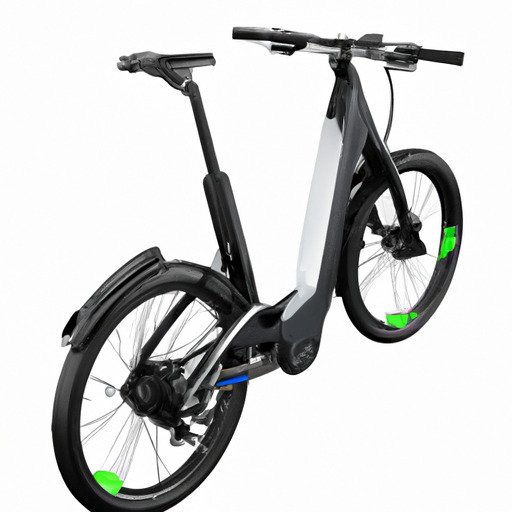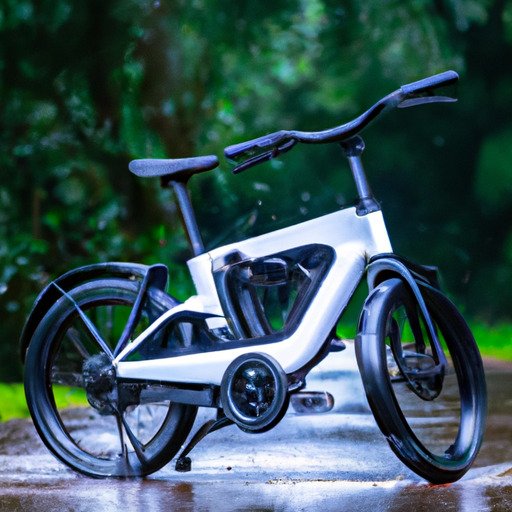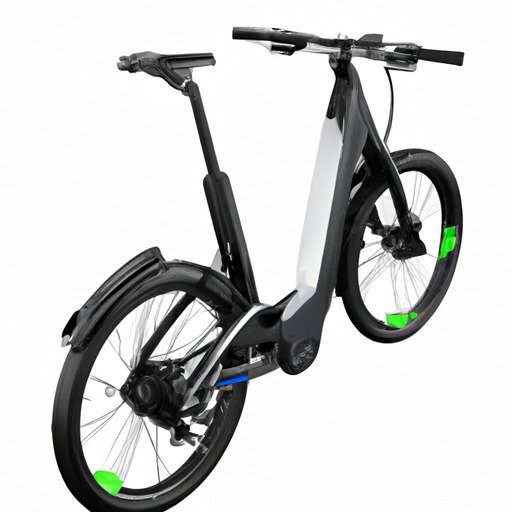
So, you’re wondering if you can take your e-bike out for a ride when it’s raining. Well, you’re not alone! Many e-bike owners have questioned whether their beloved e-bikes can withstand the rain. After all, you don’t want to damage your expensive electric bike, right? Don’t worry, I’ve got answers for you. In this article, we’ll delve into whether e-bikes can be ridden in the rain and explore some important considerations you need to keep in mind. So, without further ado, let’s get started!
Curious to know if your e-bike can handle riding in the rain? Well, you’ve come to the right place! In this article, we’ll be addressing the common question of whether e-bikes can be ridden in the rain. From the potential risks to the necessary precautions, we’ll cover it all. So, if you’re eager to learn more about riding your e-bike in wet weather conditions, keep reading. By the end of this article, you’ll have a better understanding of how rain affects e-bikes and whether it’s safe to ride them during rainfall.
Effects of Rain on E-bikes
Water Damage and Corrosion
When it comes to riding e-bikes in the rain, one of the main concerns is water damage and corrosion. Rainwater can seep into various parts of the e-bike, such as the frame, electrical components, and even the battery. Over time, this can lead to rust, corrosion, and potential malfunctioning of the bike.
Reduced Traction and Braking
Another effect of rain on e-bikes is reduced traction and braking capabilities. Wet surfaces tend to be slippery, making it harder for the tires to grip the road. This can result in poor traction when accelerating or cornering, increasing the risk of accidents. Additionally, braking distances tend to be longer on wet surfaces, further compromising safety.
Electrical System Vulnerability
E-bikes rely on electrical systems to power their motor. However, these systems can be vulnerable to water damage. Water can infiltrate the electrical connections and components, leading to short circuits and malfunctions. This can potentially leave riders stranded or prevent the e-bike from functioning properly.
Protective Measures for Riding E-bikes in Rain
Investing in Waterproof Accessories
To protect your e-bike from rain, it’s essential to invest in waterproof accessories. Consider purchasing a waterproof cover for your bike, especially if you often leave it parked outside. Additionally, waterproof bags or panniers can keep your belongings dry while riding. Make sure to choose accessories that are specifically designed to withstand rain and offer complete protection.
Applying Appropriate Lubrication
Proper lubrication is crucial for the smooth functioning of your e-bike’s moving parts. Rain can wash away the lubricant on the chain, gears, and pedals, leading to increased friction and potential damage. To prevent this, use a waterproof and weather-resistant lubricant specifically designed for bikes. Regularly applying this type of lubricant will help protect your e-bike’s components from water damage and keep them running smoothly.
Keeping Electrical Components Dry
One of the most critical aspects to consider when riding e-bikes in the rain is keeping the electrical components dry. Water exposure can lead to damage and malfunctions in the electrical system. Protect the battery and other exposed electrical components by using waterproof casings or covers. It’s also essential to ensure all connections are securely sealed to prevent water from seeping in.

Maintenance Tips for Riding E-bikes in Rain
Thoroughly Dry the E-bike
After riding your e-bike in the rain, it’s crucial to thoroughly dry it to prevent water damage and corrosion. Use a clean cloth to wipe down the frame, handlebars, and other exposed parts. Pay special attention to hard-to-reach areas and ensure all water is removed before storing the bike. Drying the e-bike will help prolong its lifespan and maintain its performance.
Inspect and Clean the Chain
Rain can cause dirt, debris, and moisture to accumulate on the chain, leading to increased friction and potential damage. Regularly inspect the chain for any signs of rust or excessive grime. If necessary, clean the chain using a suitable degreaser and a brush to remove any dirt or debris. Once clean, apply a fresh coat of lubricant to ensure smooth and efficient operation.
Check and Adjust Brakes
Due to reduced traction on wet surfaces, it’s crucial to regularly check and adjust your e-bike’s brakes. Ensure that the brake pads are properly aligned and have enough life left in them. Squeeze the brake levers and listen for any unusual noises or signs of wear. If necessary, replace worn brake pads or consult a professional bike technician to ensure optimal braking performance.
Proper Riding Techniques in Rain
Reduced Speed and Smooth Braking
When riding e-bikes in the rain, it’s important to adjust your speed and braking accordingly. Reduce your speed to allow for better control and reaction time. Avoid sudden or aggressive braking, as it can cause the tires to lose traction and potentially lead to accidents. Instead, brake gently and smoothly to give the tires the best chance of maintaining grip on the wet road surface.
Gentle Maneuvering on Wet Surfaces
Wet surfaces can be unpredictable, so it’s crucial to be cautious when maneuvering your e-bike. Take corners and turns slowly and smoothly to maintain control. Avoid sudden movements or sharp turns that can result in loss of traction. Be mindful of potential hazards, such as painted road markings or metal surfaces, which tend to be more slippery in wet conditions.
Maintaining Visibility
Rainy conditions often lead to decreased visibility for both riders and other road users. Ensure you have proper lighting installed on your e-bike, including front and rear lights. Consider using additional reflective materials or clothing to further enhance your visibility. It’s also important to use hand signals and indicate your intentions to other road users, allowing them enough time to react and maintain a safe distance.

Choosing the Right E-bike for Rainy Conditions
IP Rating and Waterproof Design
When considering an e-bike for riding in rainy conditions, it’s important to look for models with a high IP rating and a waterproof design. The IP rating indicates the bike’s resistance to water and solids. Higher IP ratings offer better protection against rain and moisture. Additionally, check if the e-bike has waterproof seals and connections to ensure the electrical system remains protected from water damage.
Tire Tread and Grip
The tires of an e-bike play a crucial role in maintaining traction and grip on wet surfaces. Look for tires with a tread pattern specifically designed for rain. These tires often have deeper grooves and channels to disperse water and improve traction. Additionally, consider wider tires, as they offer better stability and grip on wet roads, reducing the risk of skidding or sliding.
Fenders and Mudguards
E-bikes equipped with fenders and mudguards offer additional protection during rainy rides. These accessories help prevent water from splashing onto the rider and the bike’s components, reducing the potential for water damage. Fenders and mudguards also help keep rainwater away from the tires, minimizing the risk of skidding or loss of traction.
Safety Considerations and Precautions
Wearing Appropriate Protection
When riding e-bikes in the rain, it’s important to wear appropriate protective gear. Invest in a good quality waterproof and breathable jacket to keep yourself dry. Wear gloves with good grip to maintain control of the handlebars. Consider wearing waterproof pants or shoe covers to keep your lower body and feet protected from the rain. Additionally, always wear a helmet to ensure your safety in case of accidents.
Understanding the Risks
While e-bikes can be ridden in the rain, it’s essential to understand the risks involved. Wet surfaces increase the chances of accidents and require extra caution. Riders should be aware of their own capabilities and adjust their riding style accordingly. Being mindful of potential hazards, such as slippery surfaces or reduced visibility, can help mitigate the risks associated with riding e-bikes in the rain.
Being Aware of Road Conditions
Before embarking on a ride in rainy conditions, it’s important to be aware of the road conditions. Check weather forecasts to anticipate potential rain or storms. Avoid riding in heavy rain or thunderstorms, as these conditions can be extremely dangerous. Take note of any flood warnings or areas prone to water accumulation, as they may pose a significant risk to both the rider and the e-bike.
Benefits of Riding E-bikes in the Rain
Increased Fun and Adventure
Riding e-bikes in the rain can add an element of fun and adventure to your cycling experience. The sensation of raindrops hitting your face as you ride can be invigorating and refreshing. Exploring new routes and finding hidden gems in your city during rainy weather can provide a unique and exciting cycling experience.
Less Crowded Roads
Another benefit of riding e-bikes in the rain is the lack of crowded roads. Many people choose to stay indoors during rainy weather, resulting in quieter and less congested streets. This can allow you to enjoy a more relaxed and peaceful ride, without the usual hustle and bustle of traffic.
Refreshing Experience
Rainy rides can offer a refreshing break from the monotony of routine cycling. The sound of rain, the smell of wet pavement, and the sights of nature during rainfall can create a tranquil and calming atmosphere. Riding an e-bike in the rain can provide a refreshing and rejuvenating experience for both the mind and body.
Riding E-bikes in Different Rain Intensities
Light Showers
Light showers are generally safe for riding e-bikes, as long as proper precautions are taken. The rain intensity is usually not enough to affect the bike’s components or compromise safety. However, it’s still important to adjust your speed, maintain proper braking techniques, and stay vigilant of potential hazards on the road.
Moderate Rain
Riding an e-bike in moderate rain requires extra caution and attention. The intensity of the rain may increase the chances of water damage and reduce traction. Adjust your speed accordingly and be mindful of road conditions. Ensure your e-bike is properly maintained and protected from water exposure to minimize risks.
Heavy Downpours
Heavy downpours pose the most significant risks and should be avoided whenever possible. Riding an e-bike in heavy rain can be dangerous due to reduced visibility, poor traction, and potential damage to the bike’s components. It’s crucial to prioritize safety and wait for the rain to subside before going on a ride in these conditions.
Potential Risks and Limitations
Reduced Battery Performance
Riding e-bikes in the rain can affect the performance and range of the battery. Wet conditions may cause the battery to drain faster than usual. It’s important to be mindful of the battery level and plan your rides accordingly to ensure a safe return. Keep the battery and electrical connections dry to minimize any impact on performance.
Slippery and Hazardous Surfaces
Wet surfaces can be extremely slippery, increasing the risk of accidents. Road markings, metal surfaces, and painted road signs can become particularly hazardous during rain. Exercise caution and avoid sudden movements or sharp turns on these surfaces. Be aware of potential hazards and adjust your riding style accordingly to maintain control and reduce the risk of accidents.
Risk of Hypothermia
Riding in the rain for an extended period can expose riders to the risk of hypothermia. Prolonged exposure to wet and cold conditions can cause a drop in body temperature. To prevent hypothermia, dress appropriately with warm and waterproof clothing. If you start feeling excessively cold or experience symptoms such as shivering or confusion, it’s crucial to find shelter and warm up immediately.
Conclusion
In conclusion, e-bikes can be ridden in the rain with proper precautions and maintenance. Understanding the effects of rain on e-bikes and implementing protective measures, such as investing in waterproof accessories and keeping electrical components dry, can help minimize the risks associated with riding in wet conditions.
Following maintenance tips, such as thoroughly drying the e-bike, inspecting and cleaning the chain, and checking and adjusting the brakes, ensures optimal performance and longevity of the e-bike. Adhering to proper riding techniques, choosing the right e-bike for rainy conditions, and taking safety considerations and precautions into account further enhance the safety and enjoyment of riding in the rain.
Despite the potential risks and limitations, riding e-bikes in the rain offers its own set of benefits, including increased fun and adventure, less crowded roads, and a refreshing experience. By embracing the proper mindset and equipping oneself with the necessary knowledge and protective gear, riders can safely and confidently explore rainy cycling adventures. So, the next time it rains, gear up, take the necessary precautions, and enjoy the unique experience of riding your e-bike in the rain.




















